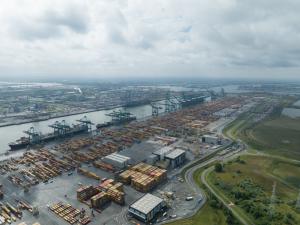
The results of the recent review report, which assessed the effectiveness of the amended Protocol to Abate Acidification, Eutrophication and Ground-Level Ozone (Gothenburg Protocol) under the UNECE Convention on Long-range Transboundary Air Pollution, have triggered further discussions among Parties on how to address them. The review report found that that while emission reductions have been achieved, countries in the Pan-European region and North America are set to suffer long-term damage from air pollution to human health, ecosystems and crop yields, also exacerbating climate change. As current legislation will not be sufficient to achieve the long-term objectives of the Protocol, further targeted emission reduction measures across sectors including agriculture, energy, transport and shipping, and wide-ranging societal changes in areas such as diet and heating, are needed. In addition to reduced emissions of nitrogen oxides (NOx), volatile organic compounds (VOCs) and methane (CH4) within the UNECE region, global CH4 reductions are needed to further reduce ground-level ozone (O3) in the region.
Given the results from the review of the Gothenburg Protocol, the Working Group on Strategies and Review discussed policy options to address them at its 61st session (4-6 September 2023). An expert group presented four main approaches for options, which could be standalone or used in combination with other options : to continue with the amended Gothenburg Protocol in its current form; to revise the Protocol; to develop a new instrument and/or new measures; and to continue and/or enhance capacity-building, awareness-raising, cooperation and other support.
The Working Group agreed that continuing with the amended Gothenburg Protocol in its current form with no additional action is not an option. Among delegations, there was significant support for a revision of the Protocol and the Working Group therefore recommended to the Executive Body that it launches a process for revising the Protocol at its 43rd session (11-14 December 2023).
In addition to the discussion on options, experts have also already worked on further technical guidance to assist Parties in reducing emissions from specific sources mentioned in the review report, specifically, agriculture, shipping, waste and energy.
The Working Group discussed co-mitigation of methane and ammonia emissions from agricultural sources and technical measures for reduction of methane (CH4) emissions from landfill, the natural gas grid and biogas facilities. While around 50 per cent of anthropogenic CH4 emissions in the European Union are generated by activities in agriculture, major non-agricultural sources are landfill gases, and oil and gas production, providing opportunities for emission reductions.
Experts also discussed technical measures for reduction of emissions from shipping, also taking into account ongoing discussions on the topic in the framework of the International Maritime Organization (IMO). Although regarded as a relatively clean modal transport due to its low greenhouse gas (GHG) emission rate per ton of transported goods compared to other types of transport, shipping transport was still responsible for about 2.9 per cent of all anthropogenic carbon dioxide (CO2) emissions in 2018. Despite a significant reduction in the sulfur content of marine fuel oil, marine shipping is the largest source of SO2 per ton-km among the various transport modes, and is also a significant source of NOx and PM. As around 70 per cent of shipping emissions are generated less than 400 km offshore and such emissions can be transported hundreds of km onshore, affecting people in densely populated coastal cities. Best Available Techniques to reduce emissions from shipping include fuel switching, combustion modification, adjustment in the propulsion mode, among others.
The draft guidance documents and the options to address the conclusions of the review of the Gothenburg Protocol will be revised, based on comments by the Working Group session, and will be presented to the Executive Body at its 43rd session (11-14 December 2023).
About the Air Convention
The UNECE Convention on Long-range Transboundary Air Pollution was adopted in 1979. Over the years, it has been extended by eight protocols that identify specific measures to be taken by Parties to cut their emissions of air pollutants. The Convention has 51 Parties, covering North America and almost the entire European continent.
The amended Gothenburg Protocol establishes legally binding emissions reduction commitments for 2020 and beyond for the major air pollutants: sulphur dioxide (SO2), nitrogen oxides (NOx), ammonia (NH3), volatile organic compounds (VOCs) and fine Particulate Matter (PM2.5). Entering into force in 2019 and with 28 Parties to date, the amended Protocol is already supporting action for clean air in a number of countries.
The policy options, proposed changes to be reflected in the final version and a table can be found on the website of the sixty-first session of the Working Group on Strategies and Review.

